The Large Hadron Collider with my own eyes. Part 2
I will continue my story about visiting the open day at CERN.
First part here
Part 2. Control Center.
')
As everyone knows, the collider contains several detectors, each of which is a complex device that requires constant attention, and the accelerator itself is a tube with superconducting magnets in which helium is located for cooling. The layout clearly shows that inside the accelerator there are two channels for accelerating particles in opposite directions.

It is clear that for the operation of the accelerator and detectors in addition to the giant electrical network requires a network of cryogenic pipelines, valves, plugsand other junk for all 27 kilometers. Liquid helium is needed to support the operation of 1,800 superconducting niobium-titanium magnets, which create a magnetic field for the movement of charged particles in a circle. These magnets operate at a temperature of 1.9 Kelvin. Due to this, the magnets create a magnetic field of 8 tesla. For comparison, the same magnets at room temperature can create a magnetic field of only 2 tesla and consume significantly more energy. It must be said that the management of all this collective farm equipment is an extremely difficult task, since, although the particle beam has microscopic dimensions, it has the energy of a car that travels at a speed of 1600 km / h, and the energy stored in magnets can instantly melt 50 tons of copper. Actually, a control center was created to manage all of this. It is located on the ground in a medium-sized building approximately in the center of the collider's circumference at Prevessin Campus. At the moment, the collider is stopped and is being modernized as a result of which it should reach its planned capacity in 2014. Therefore, in the room itself there are not so many employees and they communicate with visitors.
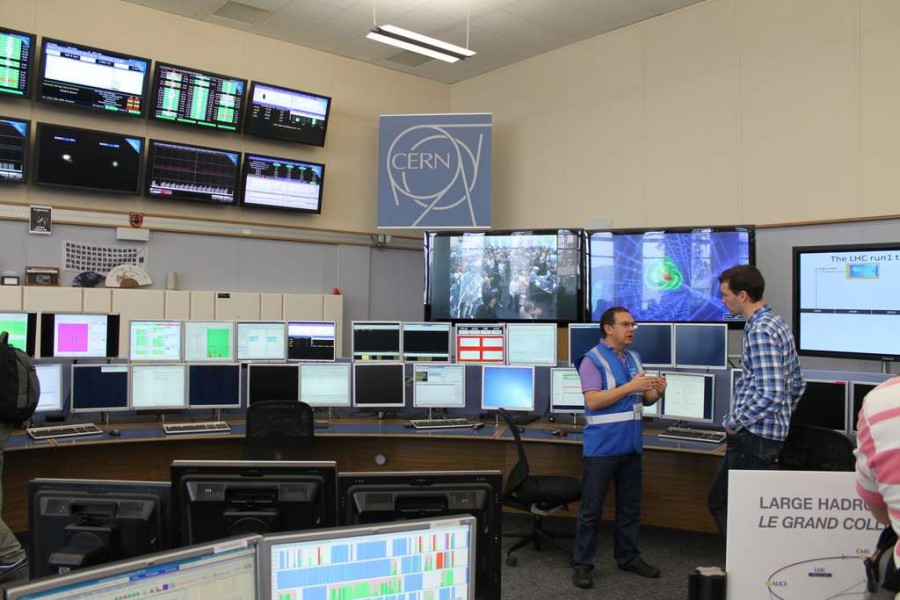
This hall is well known from television reports, although it is usually removed from the second floor. It can be seen that it is divided into sectors and in each sector there is a large number of monitors to track the current parameters of the collider (and not only that, since the system includes many other components, for example, a pre-accelerator).
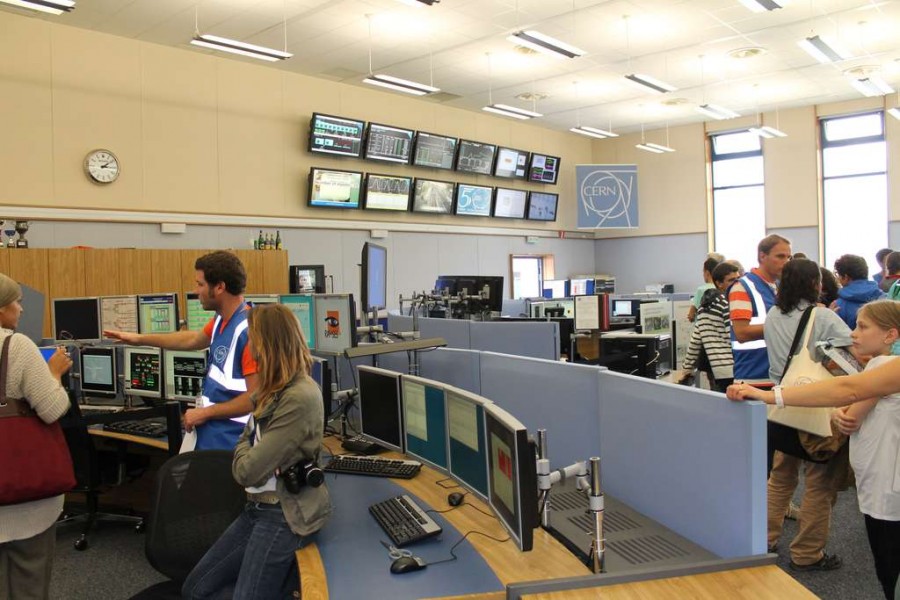
In some sectors, in addition to monitors, there are incomprehensible control panels.
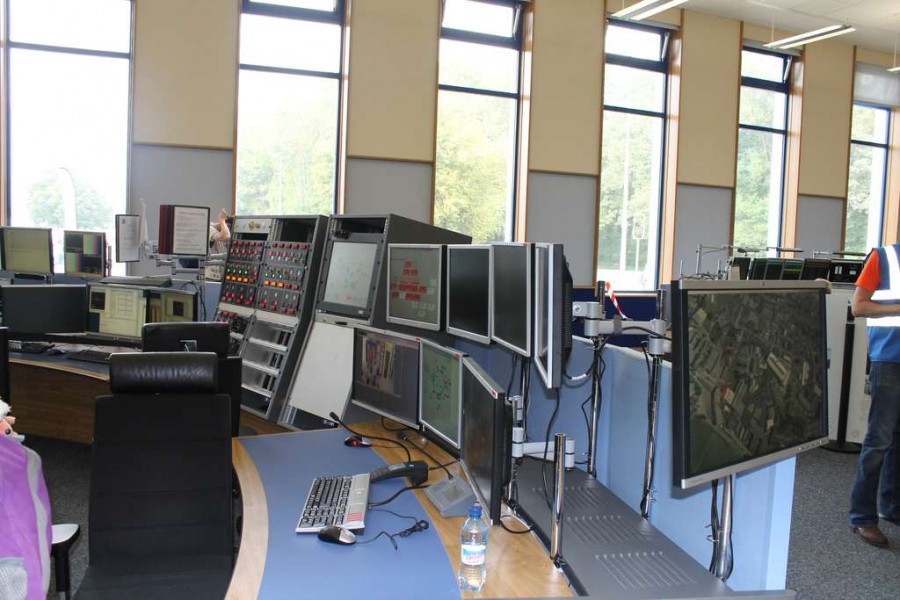
Despite the fact that the collider is stopped, its parameters are constantly monitored and the control center operates around the clock, seven days a week. The photo shows that people work while visitors are cool.
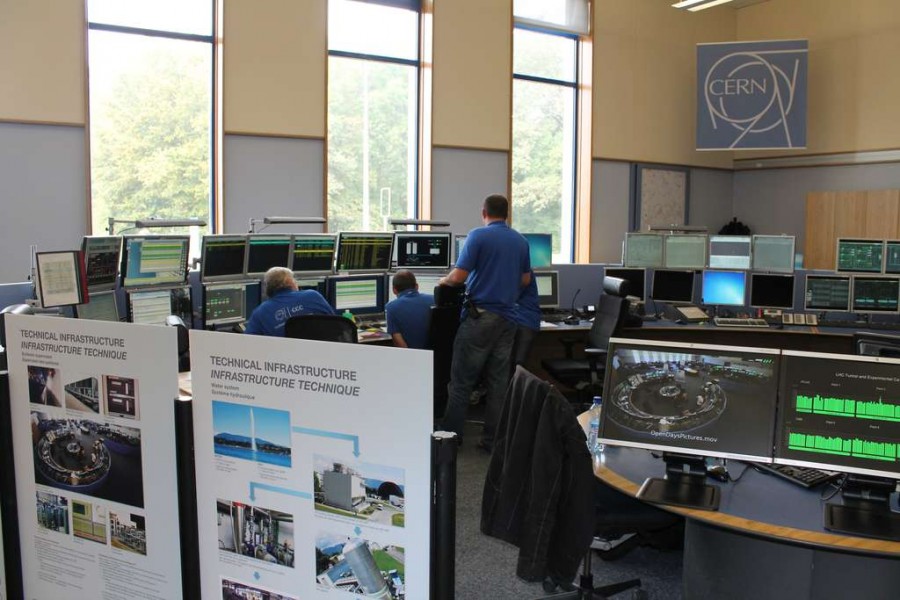

Curious visitors are tormented by questions from the staff of the control center. I must say that all the staff were very kind and did not refuse to answer even the most stupid questions from visitors.

Another view of the corner with a bunch of televisions and monitors.
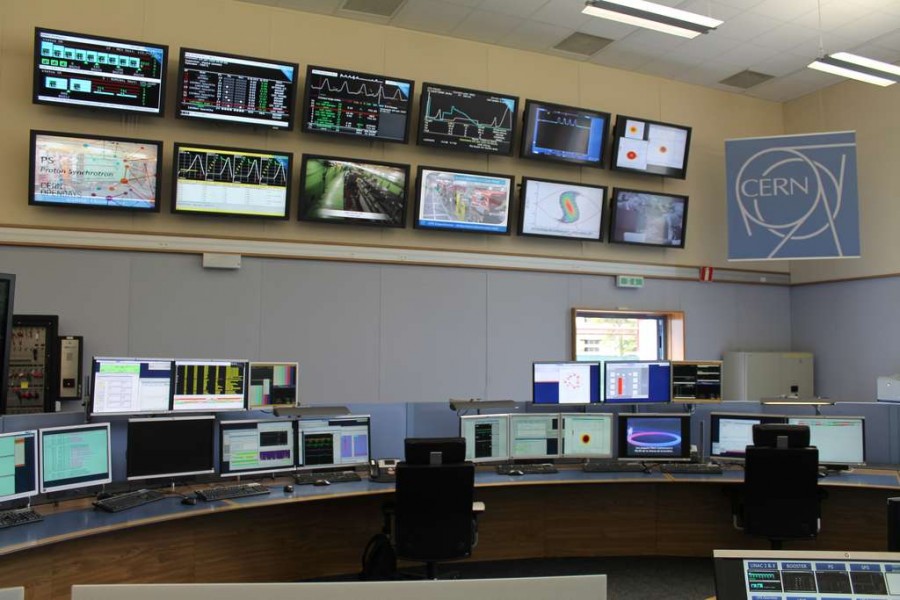
And this is what is displayed on monitors close-up.
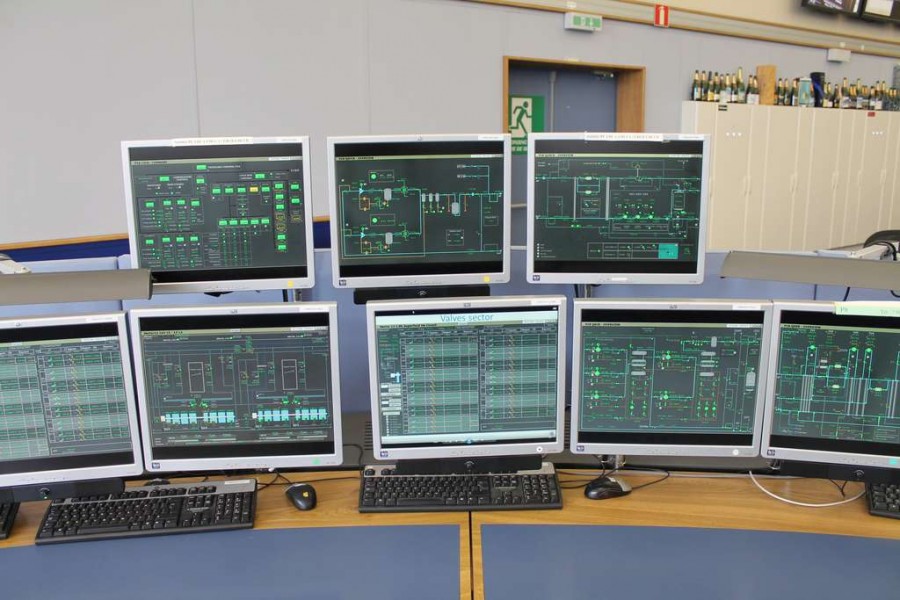
It can be seen that the collider is so complex a device that it is not possible to understand it without half a liter.
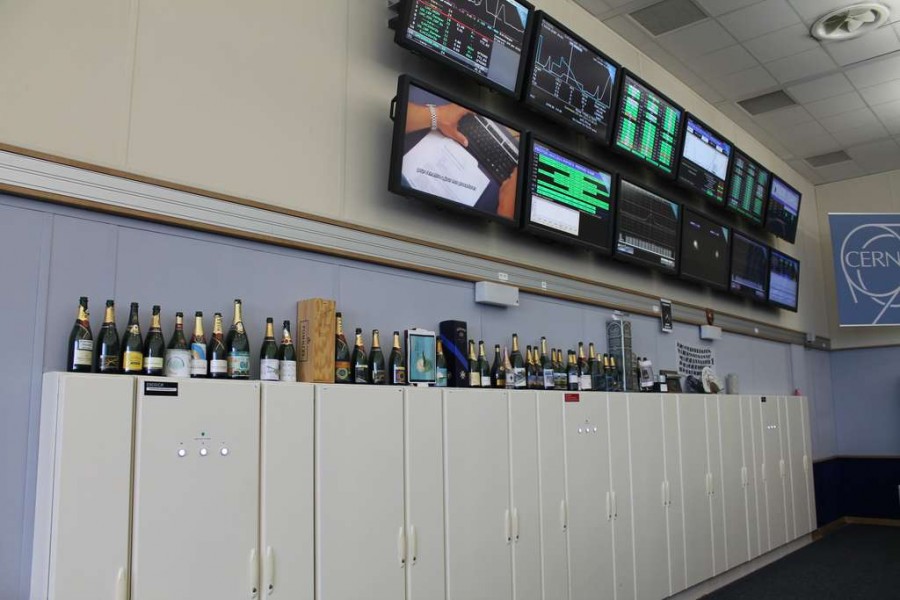

This is where my short story about the control center ends. Finally, I made a self-portrait - a bit tired, but overwhelmed with impressions.
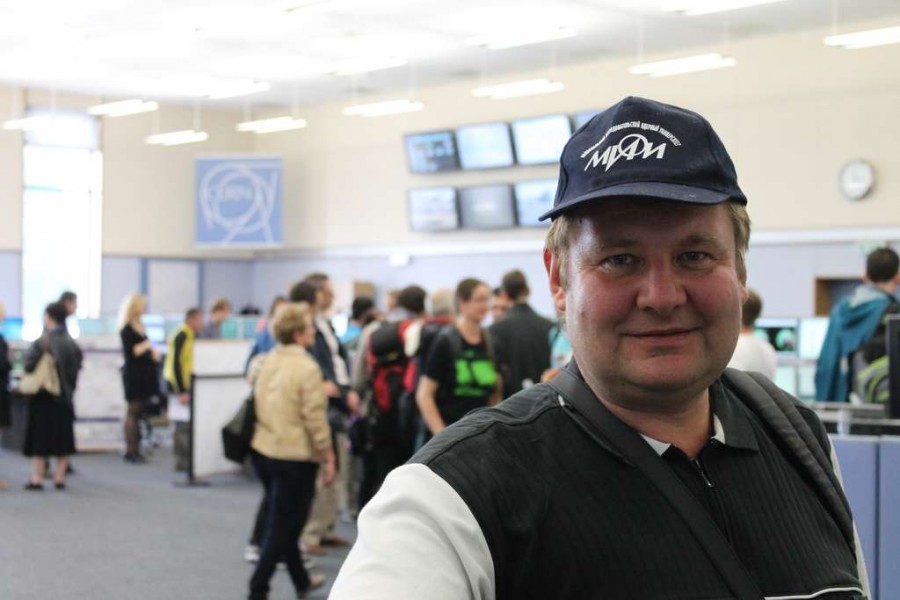
In the next part I will talk about the main computing center, where the processing and storage of the results of experiments takes place.
First part here
Part 2. Control Center.
')
As everyone knows, the collider contains several detectors, each of which is a complex device that requires constant attention, and the accelerator itself is a tube with superconducting magnets in which helium is located for cooling. The layout clearly shows that inside the accelerator there are two channels for accelerating particles in opposite directions.

It is clear that for the operation of the accelerator and detectors in addition to the giant electrical network requires a network of cryogenic pipelines, valves, plugs

This hall is well known from television reports, although it is usually removed from the second floor. It can be seen that it is divided into sectors and in each sector there is a large number of monitors to track the current parameters of the collider (and not only that, since the system includes many other components, for example, a pre-accelerator).

In some sectors, in addition to monitors, there are incomprehensible control panels.

Despite the fact that the collider is stopped, its parameters are constantly monitored and the control center operates around the clock, seven days a week. The photo shows that people work while visitors are cool.


Curious visitors are tormented by questions from the staff of the control center. I must say that all the staff were very kind and did not refuse to answer even the most stupid questions from visitors.

Another view of the corner with a bunch of televisions and monitors.

And this is what is displayed on monitors close-up.

It can be seen that the collider is so complex a device that it is not possible to understand it without half a liter.


This is where my short story about the control center ends. Finally, I made a self-portrait - a bit tired, but overwhelmed with impressions.

In the next part I will talk about the main computing center, where the processing and storage of the results of experiments takes place.
Source: https://habr.com/ru/post/196422/
All Articles